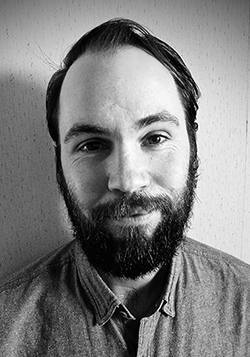
10 Commissions: Samuel Smith & 'dark colours'
As a musical celebration of the 10th Anniversary of Melbourne Recital Centre, 10 composers have each created a new work to be performed at the Centre throughout 2019.
The 10 composers represent a diverse range of musical styles but are unified by their critical acclaim and dedication to their craft. The series features an outstanding line-up of composers and performers, with each work designed to connect audience and performer in an intimate and personal way, making a significant contribution to the repertoire, across a variety of styles.
The first composer to premiere his composition is Melbourne-based artist Samuel Smith, who works primarily in the fields of notated, acoustic music and fixed media electronics. Described as ‘beguiling, mysterious and gentle’ (Canberra City News) and ‘glistening with totally gorgeous sonorities’ (The Australian), Samuel’s music focuses on the integration of slowly unfolding process, instrumental colour and virtuosic gesture.
Samuel creates what he describes as ‘multi-species funeral music,’ which is increasingly informed by the tragedies and pathos of climate change and extinction. These themes find their way into his compositions through pathways like the spectral analysis of calls of recently extinct species (in the 2018 piece endings, (anti)endings), or data points mapped from endangered wildflowers (in the forthcoming piece sun-opener).

Samuel's new work dark colours is scored for wind quintet (flute, oboe, bass clarinet, bassoon and French horn) and will be performed on Tuesday 26 March by outstanding local group Arcadia Winds.
What inspired your new work?
Samuel Smith: dark colours finds some of its meaning in the collection of colours visible behind closed eyes. It also refers to the sound-worlds I am interested in creating; those characterised by dark and opaque timbres, veiled forms and gestures, and sounds that don’t always disclose themselves, or their origins, immediately. Appropriately for something that draws on the imagery of closed eyes, it explores an interior, hushed, and nocturnal sound-world characterised by sounds I describe as in ‘threshold states,’ or between one state and another.
An example from the piece are some of the multiphonics used in the Bass Clarinet part, where Lloyd uses his fingers as though playing a very high note, but reduces the air pressure and under-blows, which results in a multiphonic (a rich sound with several distinct pitches heard at once). If he increases his breath pressure then only the top note will sound, but by under-blowing it creates something more complex. Similar things are featured in all instruments and really capture my imagination in the way they can transition from one state to another with minimal change from the player. I think this idea, of a sound not being one thing or the other, means the sounds are all haunted by their other, and I like the poetry of that. It also allows slow, simple and interior gestures to become quite complex and liminal.
What's Samuel listening to right now?
Think Bill Callahan, Noname, the Dirty Three, and St Vincent plus composers Rebecca Saunders, Pierluigi Billone and Ashley Fure, and Brisbane/Melbourne free improv trio Rogue Three.

